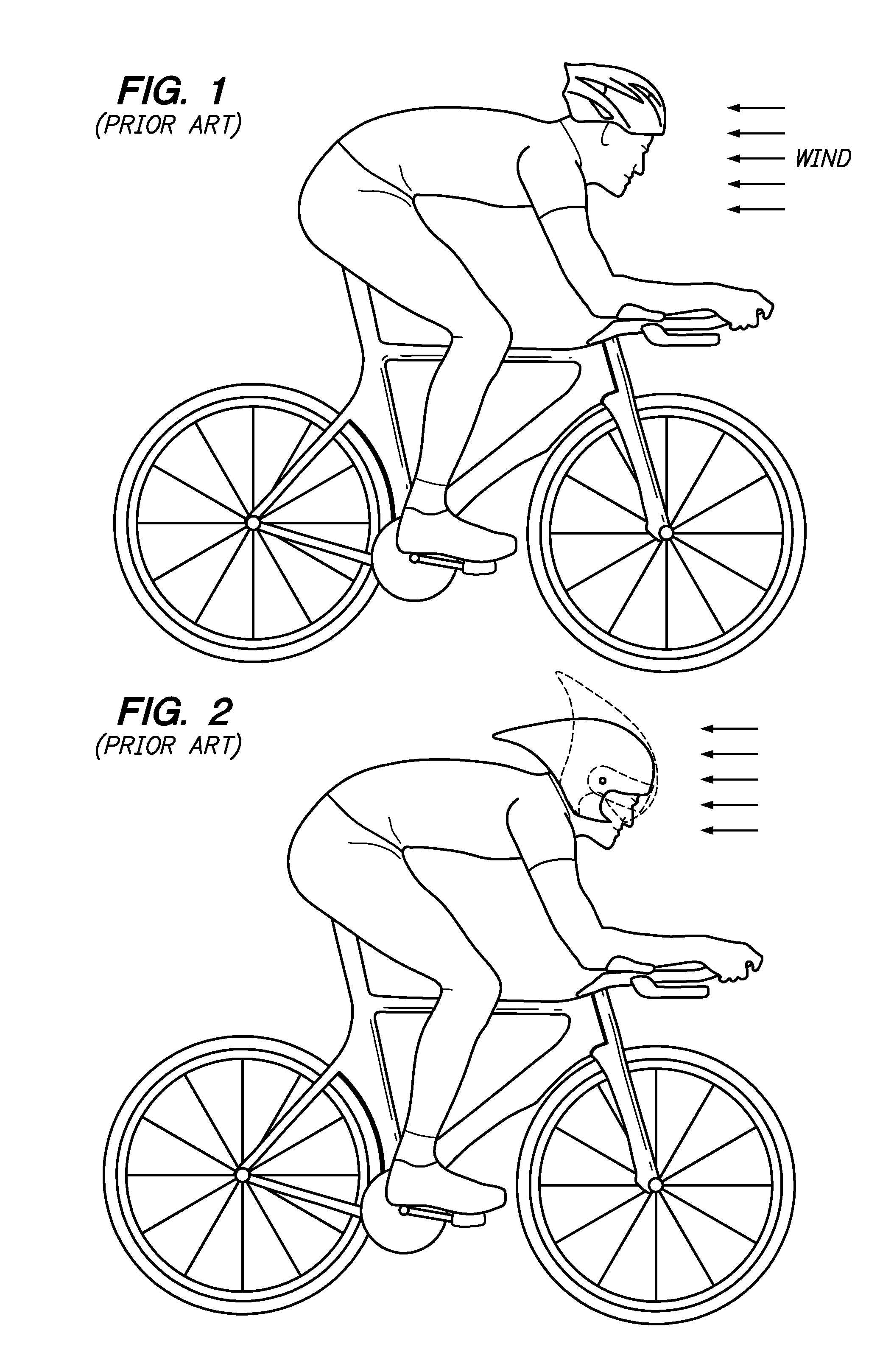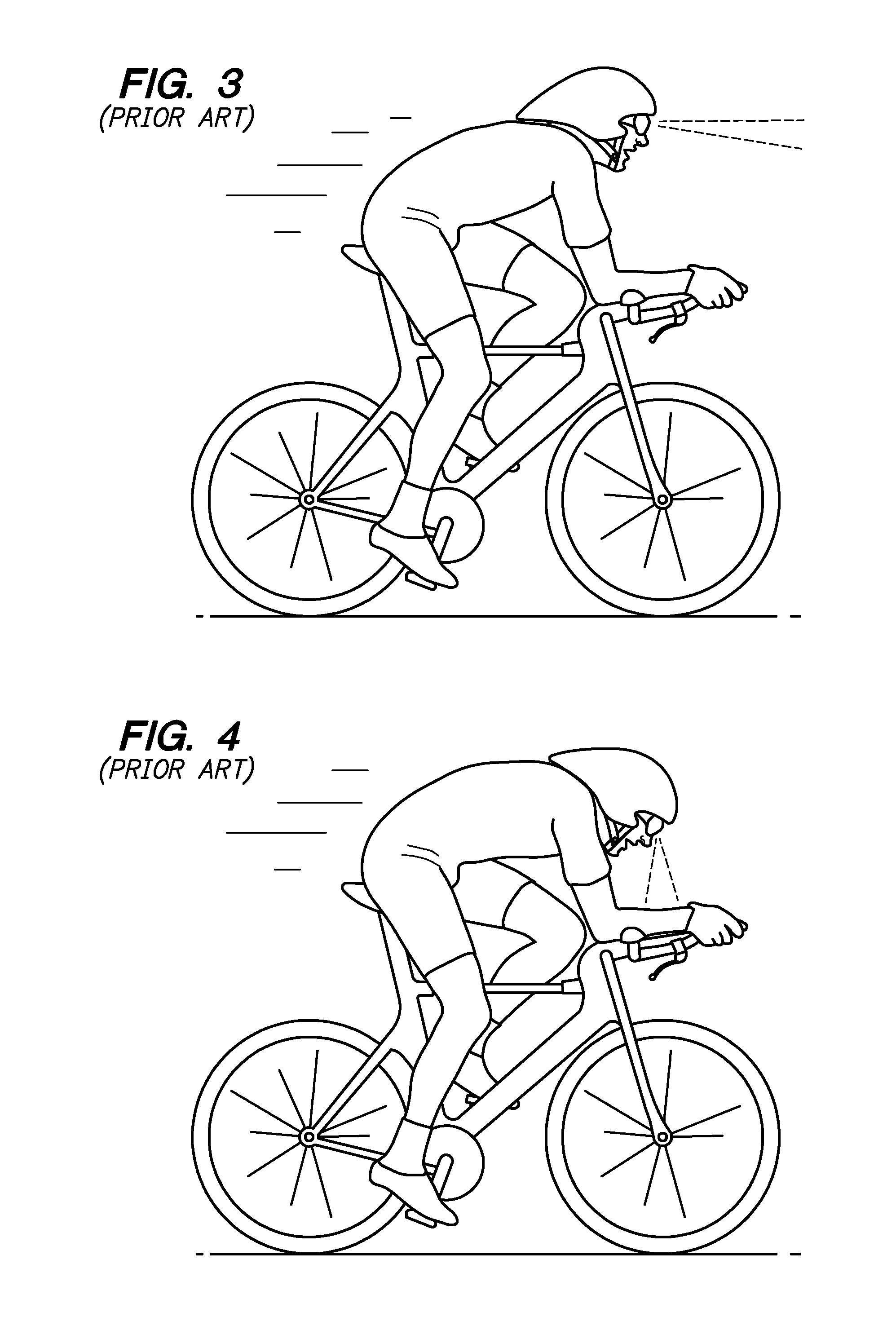Aerodynamic bicycle helmet
a bicycle helmet and frontal viewing technology, applied in the direction of bicycle equipment, steering devices, instruments, etc., can solve the problems of increased coefficient of drag, bicycle helmets without air apertures, violent and uncontrolled fall of bicycle riders, etc., to reduce aerodynamic drag, lowered head position, and lowered head position
- Summary
- Abstract
- Description
- Claims
- Application Information
AI Technical Summary
Benefits of technology
Problems solved by technology
Method used
Image
Examples
first embodiment
[0067]Referring now to FIGS. 5 and 6, the helmet 10 is shown. The helmet 10 incorporates a parabolic leading portion 26. When the rider is riding the bicycle 24 and the rider's head is in the downward position, the parabolic leading portion 26 initially contacts the oncoming wind 15 and splits the wind flow around the helmet 10 as shown by arrows 28a, b above and below the helmet 10. When the rider's head is in the downward position, as shown in FIG. 5, the upper and lower profiles 30a, b of the helmet 10 are generally symmetrical about axis 32 which may be generally parallel to a forward direction 34 of the bicycle 24. Also, a tail portion 36 of the upper profile 30a may generally blend with a back surface 38 of the rider 40. A low pressure is not created behind the rider's helmet 10 when the rider's head is in the downward position. The air 15 flows over the upper profile 30a and the back surface 38 of the rider 40. The rider does not have to lift up his / her head to look forward s...
second embodiment
[0071]Referring now to FIGS. 7 and 8, the helmet 12 is shown. Instead of a parabolic leading portion, the leading portion 44 has a spherical configuration. The wind 15 contacts the leading portion 44 and is split up by the spherical leading portion 44. When the rider 50 is in the aggressive position shown in FIG. 7, and the rider's head is looking downward, the oncoming wind 15 initially contacts the spherical leading portion 44. The oncoming wind 15 is diverted above and below the helmet 12 as shown by directional arrow 46a, b. The helmet 12 does not have a rear tail portion 36 that blends with the rider's back surface 38. Rather, the trailing surface 57 follows the contour of the rider's head. This minimizes any low pressure behind the helmet 12 caused by the oncoming wind 15. The oncoming wind 15 flowing in the direction of arrow 46a traverses over the helmet 12 and over the back surface 38 of the rider 50. The oncoming wind 15 also flows under the helmet 12 and under the face ma...
PUM
 Login to View More
Login to View More Abstract
Description
Claims
Application Information
 Login to View More
Login to View More - R&D
- Intellectual Property
- Life Sciences
- Materials
- Tech Scout
- Unparalleled Data Quality
- Higher Quality Content
- 60% Fewer Hallucinations
Browse by: Latest US Patents, China's latest patents, Technical Efficacy Thesaurus, Application Domain, Technology Topic, Popular Technical Reports.
© 2025 PatSnap. All rights reserved.Legal|Privacy policy|Modern Slavery Act Transparency Statement|Sitemap|About US| Contact US: help@patsnap.com



